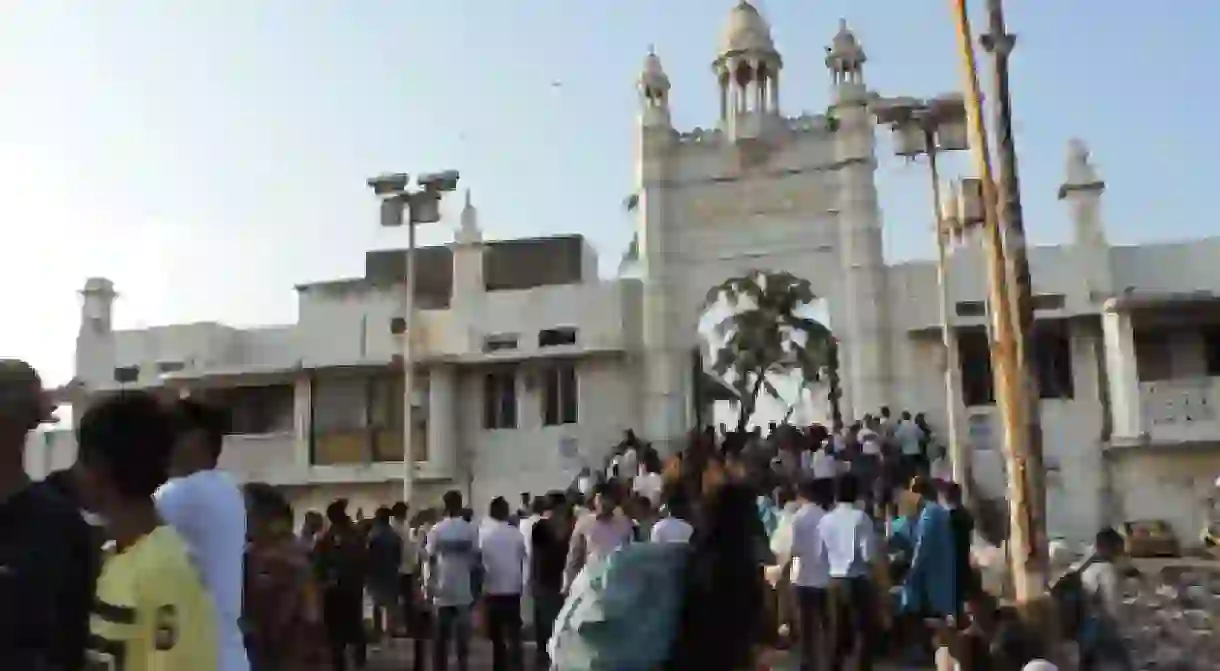History of Haji Ali Dargah in 60 Seconds

Perched on an isle amidst the waters of the Arabian Sea just about 500 metres off the coast of Worli, the pristine-white Haji Ali Dargah is a structure unlike any other in Mumbai. Built in 1431, this Mughal-style architectural marvel serves as a reminder of the city’s rich and multicultural history.
The six-hundred-year-old dargah is dedicated to the memory of Sayyed Pir Haji Ali Shah Bukhari, a 14th-century wealthy merchant turned saint hailing from Bukhara in present day Uzbekistan. The saint gave up all his wealth and material possessions to make a pilgrimage to Mecca. Then, after traveling around the world, he settled in one of the islands that today make up the city of Mumbai and dedicated his life to propagating Sufism in the area. When nearing his death, he instructed his followers not to bury his body in any graveyard or similar place, but to instead drop his shroud in the ocean and let it find a resting place by itself. The dargah is today built in the location the shroud came to rest.
Sitting atop a set of large rocks in the sea, the Haji Ali Dargah features stunning white-marble pillars, domes and minarets, which showcase Indo-Islamic architecture at its finest. While the original dargah structure dates to the 15th century, it was rebuilt to its current state in the 19th century. Made of Makrana marble from Rajasthan, the current structure houses a mosque, as well as the tomb of Sayyed Pir Haji Ali Shah Bukhari. A lush red and green brocade, marble pillars adorned with kaleidoscopic-patterned mirror work mingled with Arabic patterns spelling the ninety-nine names of Allah, all add to the otherworldy charm of this historic marvel.
The dargah is connected to Mahalaxmi in mainland Mumbai by a narrow pathway, around 800 meters in length, that appears only during low tide, thereby making the historic shrine inaccessible during high tides. Constant exposure to saline waters and impact from hosting over 80,000 visitors per week has made the structure prone to erosion and damage. As a result, the structure has had to receive constant reparations – with the most recent one being in 2008.













